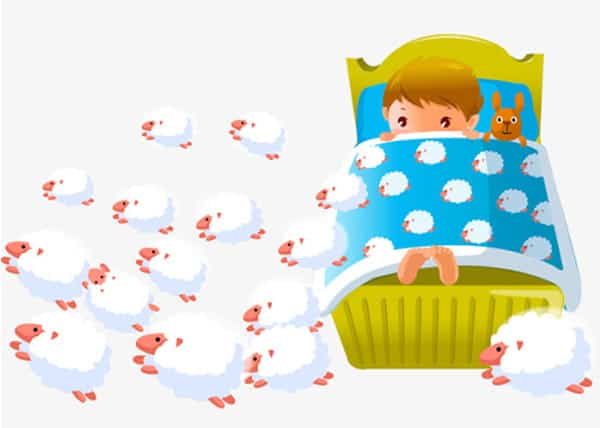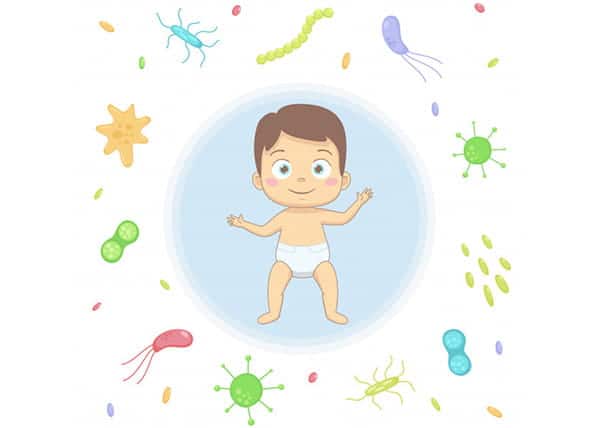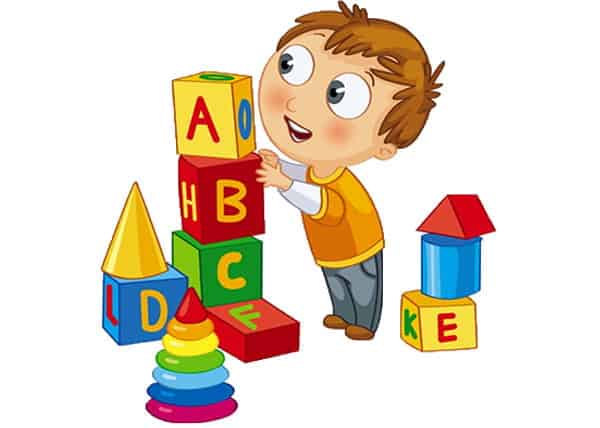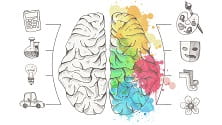And we are in the second half of the third year. Admittingly, it was a less emotionally turbulent quarter compared to the first half of the year. But that doesn’t make it less dynamic! From removing daily naps to longer self-play and boosting immunity (read: putting everything in mouth again), it was another interesting period. So let’s dive in and explore the third quarter of the third year.
Article Contents
1. Sleeping woes2. Let them eat dirt!
3. Let’s play! Or I’ll go and play by myself for some time
Here we will be talking about the changes and development milestones we noticed in a child from two and a half years old to 2 years and nine months of age. If you would rather know more about the first year of a baby’s life, be sure to check the first year of a child’s life section. And if you are interested in the child from 1 year old to 2 years old, you can check all about it in the second year of the child life category.
Sleeping woes
L. dropped her day nap! We all know naps are very beneficial for toddlers. They need time to process new information and experiences, consolidate memories, and recharge from all that sensory input. They prevent overtiredness, which is a trigger for irritability and meltdowns. Not to mention it’s a rare opportunity to have at least 1 hour per day to drink hot coffee and take a shower.
But alas, our nap days have come to a premature end. In the beginning, she missed her nap now and then. But she didn’t mind going to nap and she actually had a pretty solid bedtime schedule. Then something changed.
She would go to nap as usual, and she would fall asleep quickly. But in the evening, she would not go to sleep at her regular time. It would take around two hours to get her to sleep. That was longer than the actual nap! Since she is waking up quite early (around 7 AM), we were worried that she is not sleeping enough – she would sleep around 9.5 hours over the night and around 1.5 hours over the day.

We were not happy with this and we tried a few variations. Napping earlier, napping shorter. Nothing changed. Not only that but she started to wake over the night and got agitated at every sound.
After some research, we decided to try dropping the nap and to have an earlier bedtime. It worked! She is sleeping 12 hours over the night and (for now) we didn’t notice any indication she is missing the nap. It’s very soon to drop the nap though, so we will keep observing.
How much sleep do preschoolers really need? A shockingly large amount. Toddlers (1-3 years) need from 12 to 14h of sleep per day! For older toddlers, there is usually a 1-3h nap and the rest is the night sleep. For children in the 3-5 years category, there is just a slight drop, 11-13h.
Most children stop napping between 3 and 4 years, on average. There are some exceptions as with everything, but those are some average numbers to orient ourselves.
There are usually some signs that point out that the child is ready to drop the nap.
- First is the resistance to the nap time itself. If it takes too long to settle down for the nap, it might be time to move it slightly or even drop it. Toddlers could protest napping for other reasons as well, so give it some time.
- The second is, as mentioned already, nap messing with the bedtime schedule. Sometimes, weirdly, this can also be caused by overtiredness. Before dropping the nap, try tweaking the sleeping schedule a bit.
Observing the child, you will quickly notice how these changes affect the behavior. Even if you decide to drop the daily nap, leave it as an option. It’s important to have some type of rest, even if it doesn’t include actual sleeping. Maybe it can be time to do some calm activities, like listening to stories or relaxing music.
Let them eat dirt!
If you’ve been reading our previous posts, you know how we frequently mention (more complain and curse) toddler’s oral fixation. Licking windows. Sampling sand from the sandpit. Having to try EVERYTHING not licked before. Those kinds of things.
After many, many, too many attempts to stop it, we somehow accepted it. The rule is not to eat anything that’s not food. At least spit it out after sampling. But you know, rules are there to be broken. And recently we read something that supported this nice rationalization. Dirt can actually be good for you!
It’s interesting to think how just a few hundreds or even decades ago, people lived in so different conditions. Improvement of hygiene standards helped eradicate many common illnesses, especially those waterborne. However, there can be “too much of a good thing”, as they say.
Today, we live in a very clean environment, much cleaner than ever in our evolutionary history.
But that also has a bad side, sanitation is removing all microorganisms, even those which are helpful to us. Humans live in a sort of symbiosis with a huge number of different bacterias, and only now we are starting to understand how important they are, especially for our gut health.
Early expositions to certain pathogens are crucial for the development of a healthy, not overly reactive immune system. This “hygiene hypothesis”, explains why there is a rise in autoimmune diseases and allergies in modern societies.
Seems a bit like a catch-22, right? How much is enough, how much is too much? Well, you don’t have to worry, since our children know what to do. They will get those microorganisms in themselves in any way they can. Seems like that’s an evolutionary thing to do in this stage – why else would so stubbornly persist all this time? Think like this, if some trait survives even though it’s apparently dangerous, it must have lots of benefits for us. Otherwise, we as a species wouldn’t survive. So, let them walk barefoot over grass and dirt, let them roll in the mud, and pretend you don’t see them licking that sand ice cream.

Hey, that doesn’t mean I won’t clean my child’s hands (probably too many times) or that I will encourage her to sample the mud cake. But I won’t freak out when she finds those opportunities herself. And I know she definitely will.
This all is even harder now, with Covid-19. We are told to use masks, wash hands frequently, and avoid other people. There are even children’s books about it, talking about how dangerous this disease is and how to avoid getting infected. And we definitely should talk about that with our children and follow all the guidelines.
Still, I feel we need to be careful here. Being wary of pathogens is a sensible attitude, but not something we want to burden our children with. This situation is weird and hard for everyone but can be especially confusing for children. What they need is a playful and carefree childhood. They are adaptable, that’s true, but do we even want them to “adapt” to this strange new world? Besides physical health, there is also mental health we need to think about. So stay safe, be informed, but find ways to play. In mud and dirt, in sand and water, in nature.
Let’s play! Or I’ll go and play by myself for some time
In the last 3 months, we noticed even longer self-play than in the previous period. We have already talked about self-play and how it emerged around the second year. But now, it reached a new level again. Sometimes, she can play by herself for good 30-45 minutes, deeply engaged in her activities. Her stars are still plastic animals, but sometimes they go to a doctor, sometimes to the cake shop, sometimes to swim in the sea…

Also, her planning abilities improved a lot and there is no more “we will do it tomorrow” excuse. Now she recalls her plans and pursues them as planned. If she says she wants to build a train, but we say in the morning because it’s too late now, first thing in the morning she will want to build a train!
She also showed a big interest in puzzles. First, she started with 6 piece puzzles. And she was struggling with them for a couple of days, asked for help, improved, and mastered the images. But she used them so much that cardboard puzzles wore off. So we bought 12 piece puzzles that she still struggles with. It can be frustrating for her, but as every child, she doesn’t surrender that easily. She may take a pause but every now or then she goes back to them and each time there is an improvement.
The gist is, although it’s sometimes hard to watch our child struggle, we shouldn’t intervene at the first sign of hardship. They may even show frustration, as we all do when doing something hard. But unlike us grownups, children don’t quit that easily. So wait for them to ask for help and then try to help them a little, still not doing the whole challenge for them. Most of the time, they just want to know you are there for them, and that will give them the motivation to continue trying. Help them little by little until the challenge is solved. Next time they will need less help.
If doing everything for our little ones, we are just showing them that we think they are unable to do things by themselves and that there is no point in trying. And that is not what we want. We need to encourage them but also support them. Not an easy balancing act, right?
Important thing is to acknowledge feelings of frustration and encourage them to continue trying or even change strategy. Our children are also watching how we tend to deal with our own challenges. So model grit and perseverance. You can even narrate your thoughts and feelings: “Oh, this task is so annoying. I can’t seem to get it. I feel I’m getting upset. I’ll take a little break and go back to it.”
One other thing (that we won’t complain about) we noticed is the lack of any interest in television. We were never big watchers, but we occasionally watched a 20-30 minute long cartoon.
But in the last couple of months, things changed. Sometimes, after work, I just want to relax for 30 minutes by sitting and watching Tiger Daniel. But no! Her favorite cartoon is not that fun anymore. Why watch screens when we can build a farm for animals, cook lunch for animals, treat animals… Yes, she really likes her animals.
We know children love to watch cartoons at this age. Our little one can also be hyper-focused when she watches something (especially videos of her favorite songs). But at the same time, there are so many other things that interest them and we should encourage activities away from the screen.
Off-screen activities are better for the development of imagination. Imagination is important for creativity. And children with a healthy dose of imagination and creativity always find things to entertain themselves.
And that would be the short overview of this quarter. Don’t forget to visit us in the next article where we wrap up the third year. For sure, life won’t be boring and many more “exciting” changes await us.
If you’re searching for some great STEM Activities for Kids and Child development tips, you’re in the right place! Check the Categories below to find the right activity for you.

STEM Science
Videos, guides and explanations about STEM Science in a step-by-step way with materials you probably already have at your home. Find new Science ideas.
Read more
STEM Technology
Videos, guides and explanations about STEM Technology in a step-by-step way with materials you probably already have at your home. Find new Technology ideas.
Read more
STEM Engineering
Videos, guides and explanations about STEM Engineering in a step-by-step way with materials you probably already have at your home. New Engineering ideas!
Read more
STEM Math
Videos, guides and explanations about STEM Math in a step-by-step way with materials you probably already have at your home. Find new Mathematics ideas.
Read more
Psychology
Find out all about development psychology topics that you always wanted to know. Here are articles from child psychology and development psychology overall.
Read more
First year of Child’s Life
Following a Child’s development every month from its birth. Personal experiences and tips on how to cope with challenges that you will face in parenting.
Read more